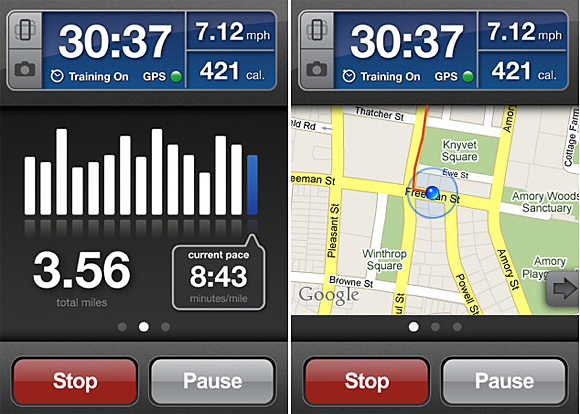RunKeeper is a location-aware app that helps runners monitor and manage their exercise regimens. The overarching goal is to aggregate the world’s fitness data and use it to power a platform that drives healthier behavior.
The app, which launched on the iPhone and has since expanded to Android and other platforms, takes advantage of the GPS sensors built into mobile devices to track runs, walks, rides, paddles and just about any outdoor activity.
I recently spoke to Jason Jacobs (@jjacobs22), co-founder and CEO of RunKeeper and a speaker at the upcoming Where 2.0 conference, about the current and near-term outlook for mobile location technology.
[Disclosure: O’Reilly AlphaTech Ventures is an investor in RunKeeper.]
How did RunKeeper come about?
 Jason Jacobs: I used the Nike+ system during an 18-week marathon training program in 2007. That system was one of the first to track fitness activity through sensors and then feed data back to a web platform where it could be analyzed. I thought the concept was incredibly powerful.
Jason Jacobs: I used the Nike+ system during an 18-week marathon training program in 2007. That system was one of the first to track fitness activity through sensors and then feed data back to a web platform where it could be analyzed. I thought the concept was incredibly powerful.
I looked around and couldn’t believe these guys were the only ones doing this, or that it was only focused on one sensor, one pair of shoes, and one sport, by a company whose core business is something totally different. There was a huge opportunity for someone to carve out a similar system that worked across different devices and sports, and build it in an input-agnostic way.
That’s when I landed on the idea for an “independent fitness technology company.” I couldn’t stop thinking about it, and in May 2008, I quit my job so I could build a team to make this vision a reality.
 Where 2.0: 2011, being held April 19-21 in Santa Clara, Calif., will explore the intersection of location technologies and trends in software development, business strategies, and marketing.
Where 2.0: 2011, being held April 19-21 in Santa Clara, Calif., will explore the intersection of location technologies and trends in software development, business strategies, and marketing.
What technical developments have enabled you to build RunKeeper?
Jason Jacobs: Two-and-a-half years ago, there were a few convergences that were starting to happen. One, GPS technology was being built into smartphones. Two, app stores completely changed the way mobile applications are distributed. There used to be long cycles of selling into mobile carriers and getting approval to be on the carrier deck. Three, social tools like Twitter and Facebook were helping word-of-mouth stretch further than ever before. This let us go from concept to revenue-generating in 35 countries in six weeks, and to build up a community of millions of users with zero marketing spend.

Screens from the RunKeeper Pro iPhone app.
Why is location technology important for this kind of application?
Jason Jacobs: Location technology gives you accurate data around things like distance, pace and elevation. This data then lets you move back into things like calories burned and total exertion.
Location data also provides context for the area you’re in: the other people running nearby, the routes you’re on, and how your performance on a certain route compares to other times you’ve run that route.
There are interesting potential applications as well. For example, if the application knows that running shoes should be changed every 500 miles, and it sees a user has logged 450 miles, a coupon could be offered for their next pair of shoes. And wouldn’t it be great if that coupon is from a retailer that’s three blocks from their house?
How do you see location-aware technologies developing over the next five to 10 years?
Jason Jacobs: The pace of innovation in sensors parallels the pace of innovation in smartphones. But what if there was a way to take location functionality and streaming data capabilities beyond a phone; to shrink them down and lower the cost? The potential applications increase and adoption would increase. A larger community and richer set of aggregate data also creates opportunities to do some really interesting things.
As location technology becomes more powerful, and as the transmission of location data becomes frictionless and fully integrated into applications that weren’t location-aware in the past, the ramifications are massive. Companies can be so much more thoughtful about the way they deliver services and person-specific functionality. That could apply to fitness, travel, logistics, shipping — there’s so many different applications for this technology.
This interview was edited and condensed.
Related:
